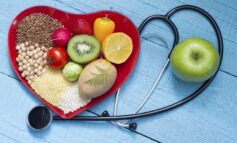About one in eight women will have invasive breast cancer some time during her life, according to the American Cancer Society (ACS). Knowing what the signs and symptoms of breast cancer are can aid in early detection. Breast cancer is most treatable when detected in its earliest phases.
Risk Factors
There are many factors that can influence a woman’s susceptibly of developing breast cancer. Things, such as family history, ethnicity, age and genetics play a role, but are obviously things we can’t control.
However, there are many things that we can control that can help limit our risk. These include:
• Weight – a BMI (Body Mass Index) over 25 increases risk, as there are higher levels of estrogen found in the body.
• Pregnancy history – not having a full-term pregnancy, or being over 30 when having a first child, can impact the production of cancer cells.
• Drinking alcohol – alcohol can damage DNA in cells and increase the risk of hormone receptor positive breast cancer.
• Eating unhealthy food – did you know that 30% to 40% of all cancers are attributable to our diet?
• Lack of exercise – exercise helps regulate blood sugar and blood levels of a hormone called insulin growth factor, which can impact the development of breast cells.
Symptoms and Signs
According to the Centers for Disease Control (CDC), signs and symptoms of breast cancer include:
• Lumps in the breast or armpit
• Redness or flaky skin in the nipple area or the breast
• Pain or pulling in nipple area
• Discharge from the nipple, including blood (not including breast milk)
• Changes in shape and size
• Pain and tenderness
Cancerous lumps can be tricky to distinguish. Sometimes they’re painless and hard with uneven edges. Some lumps can be tender, soft and round. Other times, symptoms of breast cancer can be confused with other medical conditions. For instance, cysts are small, fluid-filled sacks that can feel like a lump. Or fibrocystic breast condition, which prompts noncancerous alterations in the tissue, can also cause lumps and pain.
Helping to Prevent Breast Cancer
We can’t do anything about our gender, age or genetic heritage. But every woman can and should do something about lifestyle choices that increase the risk of getting breast cancer. These include:
• Alcohol. Women who have two to five drinks daily have about 1½ times the risk of women who don’t drink alcohol.
• Being overweight or obese. Women who gained weight as adults are at a higher risk, especially if the extra weight is around their waists.
• Lack of exercise. Women who exercise four to seen hours per week are at a lower risk for breast cancer. (Even moderate exercise, such as walking, can lower the risk.)
• Encourage mammograms and breast self-exams. The National Cancer Institute recommends that women age 40 and older have screening mammograms every one to two years. Women should know how their breasts normally look and feel and report any change in their breasts promptly to their health care provider.
• Support local fundraising walks. The ACS, for example, has a number of “Making Strides” walks in Michigan that you can participate in by walking or sponsoring a walker.
• Promote exercising and healthy living. One study found that as little as 1¼ to 2½ hours of brisk walking per week reduced the risk of breast cancer by 18 percent. The ACS recommends maintaining a healthy weight throughout life and making healthy food choices with a focus on plant-based foods. That’s good advice, since one-third of all cancer deaths in the U.S. each year are linked to diet and physical activity.
Blue Cross Blue Shield of Michigan provides and administers health benefits to more than 4.4 million members residing in Michigan in addition to members of Michigan-headquartered groups who reside outside the state. Blue Cross Blue Shield of Michigan and Blue Care Network are independent licensees of the Blue Cross and Blue Shield Association. For more company information, visit www.bcbsm.com.





Leave a Reply